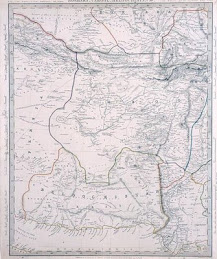Dr. Babak Khalatbari Head of Pakistan Office Konrad Adenauer Foundation The crisis curve reaches from an escalating energy shortage, raging corruption as well as after-effects of the last natural disaster over the latent conflict with India up to the Afghanistan war and its severe impacts on the border area. The decision of the Supreme Court to sack Prime Minister Raza Gilani because he prevented inquiries against President Asif Ali Zardari who was accused of money-laundering in Switzerland, plunged Pakistan’s already fragile democracy into a new crisis. This initiated a political tug of war for succession which ended with the election of Raja Pervez Ashraf as the new head of government. Such political scandals always create a lot of hype, however, they should not deflect the state’s focus from the biggest challenge of this South Asian nuclear state: the steadily growing religious extremism. Origins of this phenomenon are found in the Policy of Islamization promoted under General Zia ul-Haq in the 1980s, when hundreds of Madaris (Qur’an schools) mushroomed in Pakistan. The continued decline of the public school system over the decades gave way to these religious institutions to take up a special role and fill this gap in the prevailing education crisis of the time. According to a UNICEF statistic, 21 percent of the men and 39 percent of the women between 15 and 24 years cannot read and write. The nuclear power of Pakistan therefore has one of the highest illiteracy rates of the world. For low-income families these Qur’an schools are often the only access to education. About 15,000 of these religious educational institutions are officially registered. Several thousand Madaris operate in unlegislated space. Most of them have originated from private sponsorship and also administer their own curriculum, which does not always correspond with the government requirements. A few hundred radical Madaris are completely out of control and, therefore, can be described as a breeding ground for Jihadist terrorism. Hence, they are observed by the government and its several security agencies. Pakistan’s Educational Crisis A comprehensive educational policy is the key to stopping this trend of religious radicalization. Though Pakistan receives considerable support in the educational sector through the development cooperation, without the political will to increase the national budget for education, as well as to seize lasting reforms, such efforts will not be sustainable. The plight of education in Pakistan can be measured in figures: According to the Pakistan Education Task Force the country should spend, at least 4 percent of its budget on education. However, during the past years the budget has been decreasing in the educational sector from 2.5 to scarcely less than 2 percent – this is less than 1.5 percent of the gross national product. Compared with Pakistan the performance of the regional neighbours has been much better: India spends 4.1 percent, Bangladesh 2.4 percent and Sri Lanka 3 percent on education. About ten educational reforms have been carried out since Pakistan was founded in 1947, however, none could be implemented successfully. Currently, about seven million school-age children cannot go to school. 30 percent of the regular pupils are educated in private schools. Another six percent are taught in Madaris – that are approximately 1.6 million children. Of course, not every Madrassa student turns into a potential extremist, but the radical Madaris should not be underestimated as a recruitment pool for radical Jihadi networks and their self-appointed holy warriors. It seems that some of the Pakistani politicians including President Zardari have lost sight with time, regarding the deteriorating educational sector. Once, a European ambassador asked the President, why Pakistan does not invest more in the education sector and instead of taking up the point, he praised the Karachi Grammar School enthusiastically and stated that there would be many other excellent educational institutions in the country. Though this is right, there are several excellent schools and universities in the country but almost all of them are in the private hands and open their gates only to those families which are financially strong. In a country of 190 million people the number of such families is very insignificant. According to estimates of the international monetary fund the annual gross domestic product per head in Pakistan amounts to only 2,800 US dollars. High Time for New Measures To escape from this educational crisis, an educational policy which is better equipped financially must be adopted. However, it is not sufficient just to increase the budget and bring more money into play. In addition, it is necessary to develop better curricula and more comprehensive educational and vocational teacher trainings. More attractive teacher salaries as well as an adequate educational infrastructure, especially after the flood damages, are important points as well. Only then can the basic public education become more attractive compared with the numerous Qur’an schools. There are examples that reforms can succeed. Chile raised the number of enrolments from 74 to 95 percent in less than 20 years, in the Brazilian province, Minas Gerais the alphabetization rate improved from 49 to 73 percent within three years, and in the Indian federal state of Madhya Pradesh an additional 2.5 million children were learning to read and write over a period of two years. Numerous legislative powers have been transferred to the provinces of Pakistan by the 18th Constitutional Amendment dated, April 8, 2010, including the curriculum development, quality standards, centres of excellence and the Islamic education system. These days, the introduction of the new budgets in the provincial parliaments of Pakistan begins. In the subsequent political debates, the risk potential of the educational crisis should not be overlooked, since it will leave a lasting mark on the future of the country and its citizens. This article was published on July 11, 2012, in the Neue Zuericher Zeitung. |
Monday, July 30, 2012
Presently Pakistan struggles with many problems
Subscribe to:
Post Comments (Atom)










































No comments:
Post a Comment